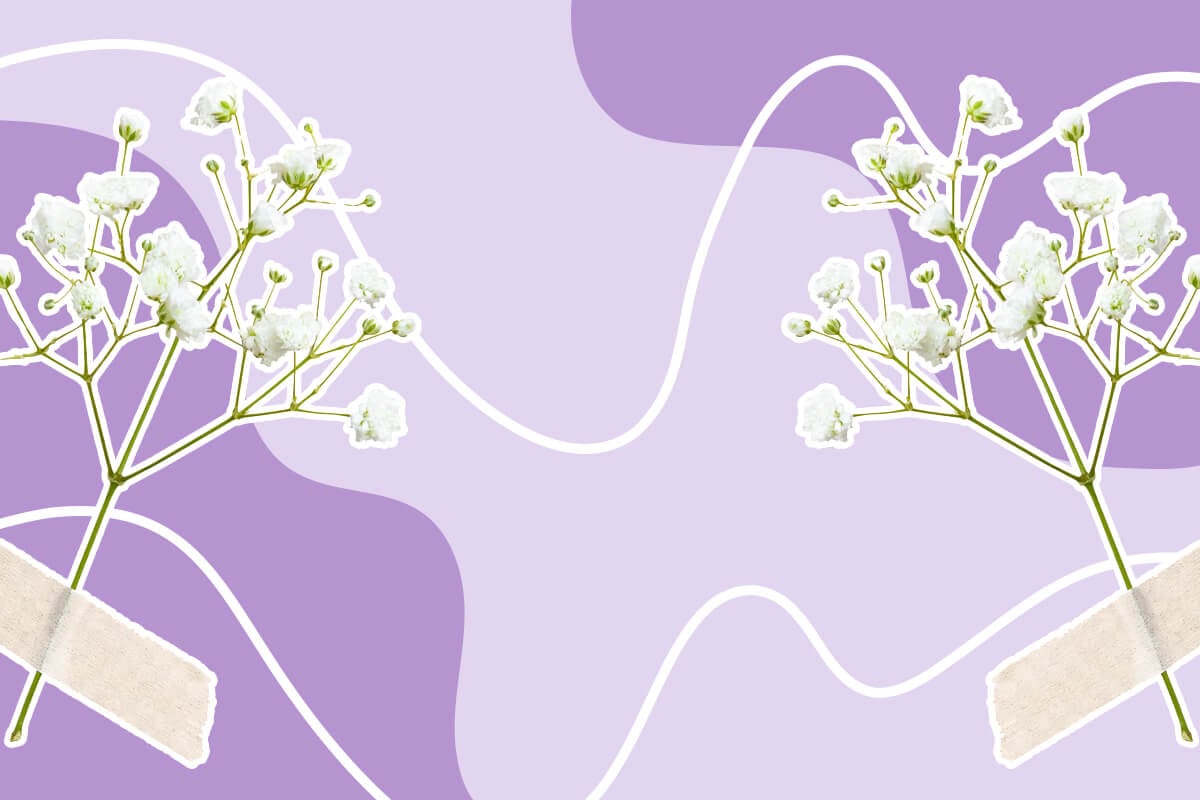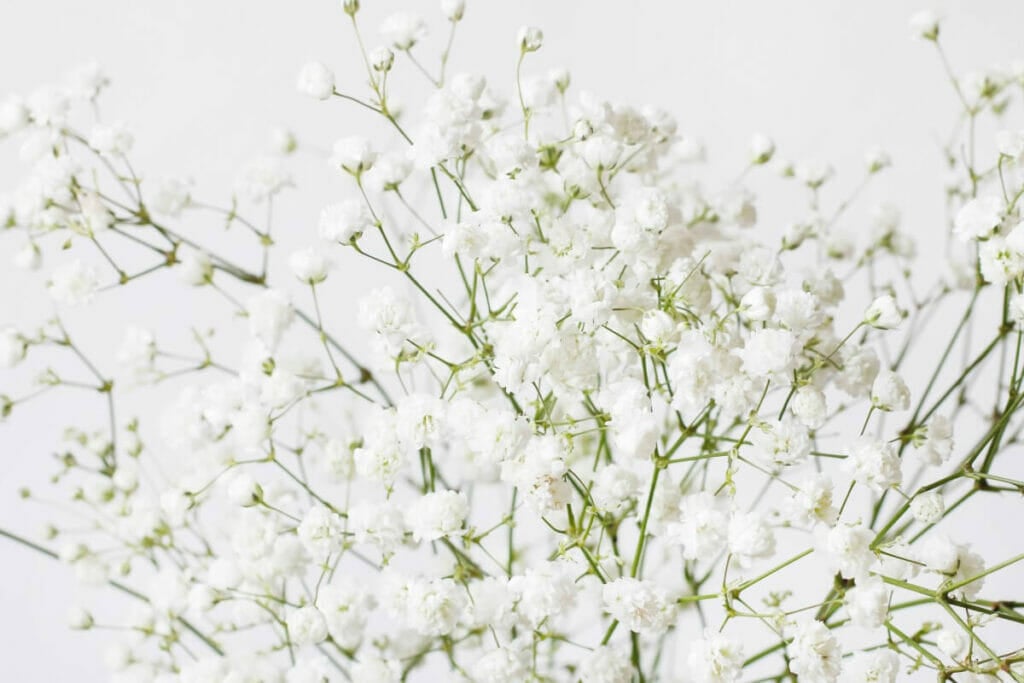Baby’s Breath Flower Symbolism in Floriography
Baby’s breath, or gypsophila, is a delicate flower with various references and uses across history and culture. It can represent innocent love, new beginnings, and happiness, among other meanings. This guide will explore the meaning and symbolism attributed to the baby’s breath flower. Continue reading to discover this plant’s significance, appropriate gifting occasions, and more.

Key Takeaways
Baby’s breath flowers are often associated with young love and new beginnings. The plant can also be a symbol of purity and innocence. So, baby’s breath flowers make a fitting addition to wedding bouquets. Florists commonly pair it with roses in gift arrangements for romantic and celebratory occasions.
Etymological Meaning
The scientific name for the baby’s breath genus, gypsophila, comes from the Greek words gypsos, meaning gypsum. This refers to the plant’s preference for chalky soils rich in gypsum. The ending stems from phileo, which means to love.
While it’s unclear how the nickname baby’s breath originated, some think it came about to highlight the plant’s small, delicate flowers.
Common Baby’s Breath Flower Colors and Their Meanings

Pink baby’s breath flowers often express love, appreciation, and admiration. They can also represent femininity and elegance. Like commonly held white flower meanings, white baby’s breath flowers are associated with purity, innocence, and young love.
Additionally, the white variety of this plant is easy to dye almost any color. Many flower shops offer shades including red, purple, orange, and yellow. So, you can choose any color of baby’s breath to reflect your mood, a friend’s favorite color, or a specific occasion.
Do Baby’s Breath Flowers Appear in Myths and Folklore?
Baby’s breath flowers don’t appear in many known myths or folktales. However, many cultures enjoy the flower for ceremonies and rituals.
Of course, it’s a popular choice for weddings all over the world. It’s also a common filler flower in traditional bouquets for special occasions and a fitting decoration for baby showers.
Baby’s Breath Cultural Significance
Many cultures worldwide have found interesting ways to use the different baby’s breath species. For example, Gypsophila oldhamiana is used in parts of China to treat various conditions. These include lung disease, fever, typhoid, and jaundice. Additionally, some people in Iran use Gypsophila paniculata as an ingredient for washing their clothes and hair.
Historical References to Baby’s Breath

Throughout their history, baby’s breath flowers have made their mark in the world of floristry. In the Victorian era, a baby’s breath symbolized innocence and purity. Some say it was a part of the Victorian language of flowers (commonly known as floriography) and represented true love.
Additionally, this plant was a well-known favorite at the time as people enjoyed its delicate, lacy appearance. Growers also liked gypsophila because white flowers were in style in gardens and cut flower arrangements.
Religious and Spiritual Meanings
Baby’s breath is not traditionally associated with any specific religion or spirituality. However, it often appears in Christian marriage ceremonies to symbolize purity and innocence. Additionally, florists sometimes add gypsophila plants to funeral arrangements as an accent flower.
References in Art
Since baby’s breath is such a common filler flower for bouquets, the plant has made its way into many still-life paintings. For example, Claude Monet created a painting called Flowers in a Pot, or Roses and Baby’s Breath. The work features a golden vessel holding pink roses and an abundance of gypsophila flowers.
A similar example is a painting called Carnations and Baby’s Breath in a Green Pitcher by French artist Odilon Redon. This piece depicts a pitcher filled with bright red carnations and delicate sprigs of gypsophila. If you browse through enough paintings of flower arrangements, you’re sure to spot other instances of this accent flower.
Suitable Gifting Occasions

Baby’s Breath is a popular choice for wedding bouquets and other traditional floral pieces, such as boutonnieres, corsages, and wedding decor.
This flower can work well in a bouquet or as an accent to more vibrant flowers like roses and tulips. It’s very versatile, so you can include it in any arrangement to add some texture and depth.
You might consider gifting a bouquet with gypsophila to celebrate a new baby or a birthday. This delicate flower is also a great choice in anniversary and Valentine’s Day arrangements.
Wrapping up
Baby’s breath flowers are dainty yet versatile, perfect for various gifting occasions. And now that you know the plant’s many meanings, you can decide if it’s the right choice for your needs. Whether on its own or in a mixed arrangement, baby’s breath adds a delicate touch to any decorative bouquet.
Brandy Wells is an American copywriter and content writer living in Spain. From hiking in her hometown near the Smoky Mountains to digging in the dirt in rural Oregon, she has always put a love of nature at the heart of her endeavors. These days, you’ll catch her writing content, and of course, taking breaks to tend to her growing houseplant collection.

